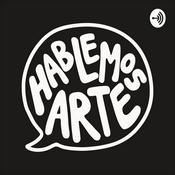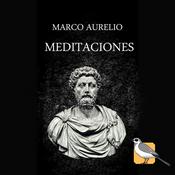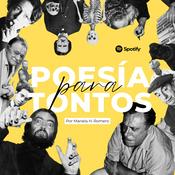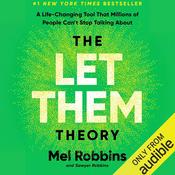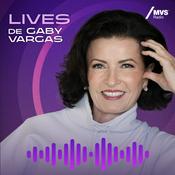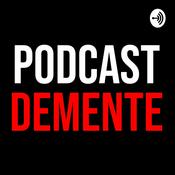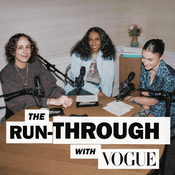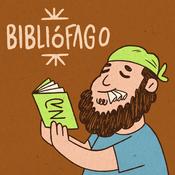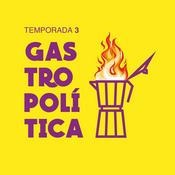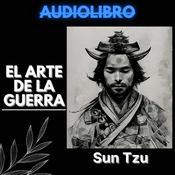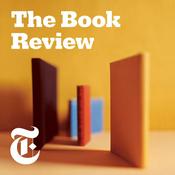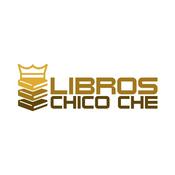94 episodios

Roslyn Kean - Printmaker : The Spectrum Of Colours That Exist
31/12/2025 | 1 h 43 min
One of the hallmarks of mokuhanga is building a strong foundation grounded in tradition. By studying deeply and making work informed by those who came before us, today's mokuhanga printmakers help carry this beautiful tradition forward. On this episode of The Unfinished Print, a mokuhanga podcast, I speak with Roslyn Kean, a mokuhanga printmaker who is continuing the tradition of mokuhanga while developing her own unique perspective. Roslyn's work is a wonderful example of how mokuhanga can be both rooted in tradition and open to exploration. Roslyn and I talk about her studies with Tōshi Yoshida and her time in Japan. We discuss her perspective on mokuhanga as a medium, her baren making, and how Australia has become an important place for printmakers, including the positive impact of diversity on Australian printmaking. Roslyn also shares insights into her process, from dampening paper and papermaking to the skill and care involved in handmade work, as well as how to source tools and equipment for making mokuhanga. Roslyn Kean - website, Instagram More notes to be added soon. © Popular Wheat Productions logo designed and produced by Douglas Batchelor and André Zadorozny Introduction music while working - Stormy Weather from The Oscar Peterson Trio Plays The Standards (2016) Musical Concepts Disclaimer: Please do not reproduce or use anything from this podcast without shooting me an email and getting my express written or verbal consent. I'm friendly :)

Sarah Brayer : Printmaker - Nothing In Isolation
04/12/2025 | 1 h 15 min
For many of us, travel to Japan is something we do once in a while. We save and plan, then journey to a country that offers so much to our mokuhanga practice. But for others, the trip becomes extended, and Japan becomes a place to build a life and make work. Japan becomes central to who they are and how they see the world. On this episode of The Unfinished Print: A Mokuhanga Podcast, I speak with Sarah Brayer, a visual artist who has made her home in Kyoto, where she has created a wide range of visual art such as mokuhanga, poured washi, fusuma murals, and aquatint. In our interview, we focus on Sarah's mokuhanga history, her studies with Toshi Yoshida, her life in Kyoto and how the city shapes her work. We also discuss her mokuhanga work, how she views the medium and where it fits into her life today. Sarah Brayer - website, Instagram River Mist Kyoto (1982) 7" x 21" aquatint - is an intaglio printmaking technique used to create rich tonal effects rather than lines alone. By dusting a metal plate with fine resin particles and then heating it to adhere the grains, the artist creates a textured, acid-resistant surface. When the plate is placed in acid, the exposed areas etch around the resin particles, producing a range of tones similar to watercolor washes. By stopping out areas and etching in stages, printmakers can build subtle gradients, deep shadows, and layered atmospheres, making aquatint especially popular for expressive, painterly prints. etching - is an intaglio printmaking process in which an image is created by using acid to bite lines into a metal plate. The plate is first coated with a waxy, acid-resistant ground, and the artist draws through this ground with a needle to expose the metal beneath. When the plate is submerged in acid, the exposed lines are etched into the surface. After the ground is removed, ink is worked into these incised lines, the surface is wiped clean, and dampened paper is pressed onto the plate with a high-pressure press, transferring the inked image. Etching allows for incredibly fine detail, expressive line quality, and a wide range of textures. raku yaki - raku ware is a traditional Japanese pottery style that originated in 16th-century Kyoto and is closely tied to the tea ceremony. Characterized by hand-shaped forms, low-temperature firing, and simple glazes that embody wabi-sabi, it was historically cooled in the open air and produced by the Raku family lineage. In contrast, Western raku refers to a later adaptation in which red-hot pieces are placed into combustible materials to create dramatic crackle and metallic effects, a process distinct from the original Japanese method. Kyoto Seika University - located in Kyoto, Japan, is a leading private institution specializing in art and design education. It offers undergraduate and graduate programs in fields such as painting, sculpture, graphic design, and manga. Known for its rigorous curriculum, Kyoto Seika emphasizes both practical skills and creative expression. With a strong tradition of nurturing talented artists and designers, the university fosters a dynamic environment that encourages innovation and artistic growth. ukiyo-e - is a multi colour woodblock print generally associated with the Edo Period (1603-1867) of Japan. What began in the 17th Century as prints of only a few colours, evolved into an elaborate system of production and technique into the Meiji Period (1868-1912). With the advent of photography and other forms of printmaking, ukiyo-e as we know it today, ceased production by the late 19th Century. Torii Kyomasu II (1706-1763) Mary Cassatt (1844–1926) was an American painter and printmaker who became a prominent figure in the French Impressionist movement. Known for her intimate portrayals of women and children, she used soft yet expressive color, loose brushwork, and innovative printmaking techniques to capture everyday domestic life. Living much of her career in Paris, she exhibited with artists like Degas, who influenced her approach to composition and perspective. Cassatt's work remains celebrated for its sensitivity, modernity, and groundbreaking representation of women's experiences. Ren Brown Collection - is gallery in Bodega Bay, California featuring contemporary Japanese prints, handmade ceramics and jewelry, Japanese antiques, and works by California artists and sculptors. Each piece reflects a dedication to quality, cultural heritage, and creative expression. Micah Schwaberow (1948-2022) - was an American mokuhanga printmaker who fused Western and Eastern imagery to create a unique perspective. His work often featured landscapes, portraits, and cultural themes. Celebration (2015) 10" x 5 1/2" bokashi - is a mokuhanga technique, where the pigment fades from a heavy colour to a softer, broad colour. Made famous by prints designed by Hokusai and Hiroshige, this technique is, for me, the most popular technique utilized by mokuhanga printmakers. There are various types: Ichimoji-bokashi or straight line graduation, used in the above mentioned Hiroshige and Hokusai prints. Ichimoji-mura-bokashi or straight line gradation with uneven edge. Ō-bokashi or wide gradation, Ate-nashi-bokashi or gradation without definition. Futa-iro-bokashi or two tone gradation, and ita-bokashi or softer-edge gradation, where the block is cut in a specific way to achieve this style of gradation. All of these styles of bokashi technique take practice and skill but are very much doable. A wonderful example of bokashi in the sky can be found below, in a print by Paul Binnie. Acropolis - Night (2007) 11.85" × 16.46" Utagawa Hiroshige (1797-1858) - born in Edo, Hiroshige is famous for his landscape series of that burgeoning city. The most famous series being, One Hundred Famous Views of Edo (1856-1859), and the landcape series, Fifty-Three Stations of the Tōkaidō (1833-1834). His work highlights bokashi, and bright colours. More info about his work can be found, here. Sumidagawa (from Forty-Eight Famous Views of Edo) (ca. 1861) 8 7/8" x 6 7/16" Kawase Hasui (1883-1957), a designer of more than six hundred woodblock prints, is one of the most famous artists of the shin-hanga movement of the early twentieth century. Hasui began his career under the guidance of Kaburaki Kiyokata (1878-1971), joining several artistic societies early on. However, it wasn't until he joined the Watanabe atelier in 1918 that he began to gain significant recognition. Watanabe Shōzaburō (1885-1962) commissioned Hasui to design landscapes of the Japanese countryside, small towns, and scenes of everyday life. Hasui also worked closely with the carvers and printers to achieve the precise quality he envisioned for his prints. Honmonji Temple in Snow at Ikegami (1931) 15.5" x 10.25" Daniel Kelly - is a visual artist and printmaker based in Kyoto, Japan. Daniel Kelly has shown all over the world, and is many museum collections as well. More information can be found, here. Three Persimmons (2015) 12″ x 40.5″ nezumi ban - otherwise known as the "mouse block" or "grey block," this is usually the first base color in a mokuhanga design. Because mokuhanga relies on building color through layered printing, the grey block forms the foundation of the image. This technique was widely used during the golden age of ukiyo-e in the Edo period (1603–1868) and the shin-hanga (new print) period (1910-1960). Mendocino Art Center - is a creative retreat and cultural landmark and is a place where artists and visitors alike can explore art, and connect in a profoundly inspiring coastal environment. More info, here. sizing/dosa - is a liquid form (prepared) animal glue which is brushed onto your washi, hanji, or other natural papers to stiffen the paper and prepare it for keeping the colour in your woodblock print. It has come to pass that size tends to be acidic and will break down the print over time. It's a bit of a double edged sword. Recipes for size can be found, here. arches - is a brand of Western watercolour paper that is acid-free. Tōsai Pigment Paste - is a brand of pigments manufactured by Holbein, Japan. They were conceived by mokuhanga printmaker Richard Steiner. Tōsai is the name given to Richard by his teacher. Richard's invteriew with The Unfinished Print can be found, here. Kathy Caraccio - is a master printer, artist, curator, professor, and collector who has collaborated with hundreds of artists from around the world. Through her studio, she has fostered a vibrant, supportive community rooted in shared creativity and craft. More info can be found, here. Oriental Bleak - mixed media collage 22" x 22" fusuma - is a traditional Japanese sliding panel used as a door or room divider in homes, temples, and tea rooms. Made with a wooden frame covered in layers of paper or cloth, fusuma slide along wooden tracks and can be removed or rearranged to change the layout of a space. They are often decorated with painted landscapes, patterns, or calligraphy. © Popular Wheat Productions logo designed and produced by Douglas Batchelor and André Zadorozny Disclaimer: Please do not reproduce or use anything from this podcast without shooting me an email and getting my express written or verbal consent. I'm friendly :)

Nobuko Yamasaki : Printmaker - Everything Connected
31/10/2025 | 53 min
Mokuhanga is an artistic medium that can challenge those who practice it. Over a long career, printmakers often feel the desire to see what else they can do with the medium, to push its boundaries and explore where it can take them. On this episode of The Unfinished Print, a mokuhanga podcast, I speak with Nobuko Yamasaki, a mokuhanga printmaker whose career has taken her from Japan to the United States, where she has settled in Michigan and built her life. Nobuko and I talk about her early work and her mokuhanga teacher, Richard Steiner his teachings and the importance of the artist's name he bestowed upon her. We discuss how mokuhanga continues to evolve in her mind, her use of sumi and how she harnesses its energy, how she incorporates old woodblocks as well as the concept of memory in her work. Nobuko also shares insights on baren making, and her approach to teaching mokuhanga. Please follow The Unfinished Print: A Mokuhanga Podcast and my own mokuhanga work on Instagram @andrezadoroznyprints or email me [email protected] Notes: may contain a hyperlink. Simply click on the highlighted word or phrase. Artists works follow after the note if available. Pieces are mokuhanga unless otherwise noted. Dimensions are given if known. Print publishers are given if known. Nobuko Yamasaki - website © Popular Wheat Productions logo designed and produced by Douglas Batchelor and André Zadorozny Disclaimer: Please do not reproduce or use anything from this podcast without shooting me an email and getting my express written or verbal consent. I'm friendly :)

Allison Tolman of The Tolman Collection : It's About The Stories
16/10/2025 | 43 min
Collecting mokuhanga has never been easier. You no longer need to visit galleries as often; you can purchase prints online from anywhere in the world, all from the comfort of your own home. But you'd be doing yourself a disservice to stop there. Seeing prints in person at galleries is a wonderful experience — it allows you to get up close to the work, to see what your potential investment looks like under the lights, and to speak with the people who work in the galleries and collections, who can help guide you toward the right decision. One such gallery is in Tokyo and New York and has a long history of showcasing wonderful contemporary prints — from mokuhanga and aquatint to lithography and other mediums. The Tolman Collection Tokyo, located in the Shibadaimon district of Minato, Tokyo, has been operating for over 50 years and enjoys a strong reputation both in Japan and around the world. In this episode of The Unfinished Print: A Mokuhanga Podcast, I speak with Allison Tolman of The Tolman Collection Tokyo. We discuss how the gallery began — from the hope and a dream of Allison's parents, Mary and Norman Tolman, who built a life and a business in a new country, to their friendships with many of the most important printmakers of their time. Allison shares why prints remain so vital today, emphasizing their democratic nature. She also discusses the differences between contemporary printmakers in Japan and those in the West, as well as the unique experiences of selling prints in Tokyo versus at The Tolman Collection in New York. Please follow The Unfinished Print: A Mokuhanga Podcast and my own mokuhanga work on Instagram @andrezadoroznyprints or email me [email protected] Notes: may contain a hyperlink. Simply click on the highlighted word or phrase. Artists works follow after the note if available. Pieces are mokuhanga unless otherwise noted. Dimensions are given if known. Print publishers are given if known. The Tolman Collection - Tokyo, New York Machida City of Graphic Arts - is a print gallery located in Machida City, Tokyo, Japan. More info can be found, here. Kitaoka Fumio (1918-2007) - was a painter who moved onto mokuhanga later in life. Kitaoka was a sōsaku hanga printmaker whose works touched on anti-war themes and Japanese society, emigres and the working class. Tsukiji Fish Market (1988) Tadashige Ono (1909-1990) - was a socially conscience printmaker of Post-War Japan. Tadashige's early works were influenced by the west with German Expressionism and later in his career, as his personal politics began to change, Tadashige;'s prints began to focus on an industrial Japan. House (Hiroshima) (1957) Tōkō Shinoda (1913-2021) - was a calligrapher and painter in Japan. Shinoda saw herself as an artist who combined painting and calligraphy together defying categorization. More information can be found, here from The Royal Ontario Museum, Toronto. Sound (ca 1990) lithograph on paper 17 5/8" h x 23 3/8" w Clifton Karhu (1927-2007) - was a mokuhanga printmaker based in Japan. Karhu lived in Japan for most of his life after studying with Tetsuo Yamada and Stanton Macdonald-Wright. HIs themes were of his home city of Kyoto, Japan. More information can be found, here. Black Robe (1976) shin hanga - is a style of Japanese woodblock printmaking that emerged in the early 20th century, marking the end of the nishiki-e period. Originating around 1915 under the direction of Watanabe Shōzaburō (1885-1962), the art form responded to the foreign demand for "traditional" Japanese imagery. Shin hanga artists focused on motifs like castles, bridges, famous landscapes, and bamboo forests. The style was initiated when Watanabe discovered Austrian artist Fritz Capelari (1884-1950) and commissioned him to design prints for Watanabe's budding printing house. This collaboration led to the evolution of shin hanga into a distinctive new style of Japanese woodblock printing. The shin hanga movement thrived until its inevitable decline after the Second World War (1939-1945). Shōzaburō Watanabe (1885-1962) - was one of the most important print publishers in Japan in the early 20th Century. His business acumen and desire to preserve the ukiyo-e tradition were incredibly influential for the artists and collectors in Japan and those around the world. Watanabe influenced other publishers, but his work in the genre is unparalleled. The shin-hanga (new print) movement is Watanabe's, collecting some of the best printers, carvers and designers to work for him. A great article by The Japan Times in 2022 discusses a touring exhibition of Watanabe's work called Shin Hanga: New Prints of Japan, which can be found here. Kawamura Sayaka - is a mokuhanga printmaker based in Japan. Her work has an ethereal quality of mystery and fantasy. More information can be found on her Instagram. Bon Voyage IV (2019) 27.56 " × 27.56 " AP - stands for Artist's Proof. When a printmaker is almost ready to print an edition, they will create a few prints that serve as proofs of the final image before the edition is printed. Gotō Hidehiko (b.1953) - is a mokuhanga printmaker and tool maker based in Japan. He makes and teaches seminars about the construction of the mokuhanga tool, the baren. Sound Of The Waves (2016) 15" × 12" Zōjōji Daimon - is a Buddhist temple in Minato, Tokyo of the Jōdo-shū (Pure Land) sect of Buddhism David Rockefeller (1915-2017) - was an American economist and investment banker who led Chase Manhattan Corporation as its chairman and CEO. From 2004 until his passing in 2017, he was the oldest living member of the Rockefeller family. The youngest of five sons, he was the child of John D. Rockefeller Jr. and Abby Aldrich Rockefeller, and the grandson of John D. Rockefeller and Laura Spelman Rockefeller. Hasegawa Yuichi (1945-2025) - was a woodblock printmaker from Aizu in Fukushima Prefecture. He was from a family of lacquerware makers. Hasegawa incorporated lacquer resin and metallic paints into his reduction woodblocks, giving them a distinctive texture and gleam. Deeply influenced by Zen and the natural world, he aimed to capture the power and splendor of nature in his prints. Night Sky No. 5 (2000) Seiko Kawachi - is a mokuhanga printmaker and painter based in Japan. His work is known for its rich use of color and dynamic energy. A longtime printmaking instructor at Tama Art University, he experienced a turning point in his middle age when he began exploring the influence of Hokusai. Using contemporary materials, his large, powerful prints capture the movement and vitality of the natural world. Object: The Flying: Ki (The Flying: Introduction) (1985) mokuhanga and intaglio, 65" × 36" Tama Art University - located in Tokyo, Japan, is one of the country's leading institutions for art and design education. Founded in 1935, it offers programs in fine arts, design, architecture, and media arts, fostering both traditional and contemporary approaches to creativity. Known for its strong emphasis on experimentation and individual expression, Tama has produced many influential artists, designers, and educators who have shaped Japan's modern art scene. More info, here. © Popular Wheat Productions logo designed and produced by Douglas Batchelor and André Zadorozny Disclaimer: Please do not reproduce or use anything from this podcast without shooting me an email and getting my express written or verbal consent. I'm friendly :)

Elizabeth Forrest : Printmaker - Have Baren, Will Travel
29/9/2025 | 1 h 19 min
For everyone listening to today's episode—especially if you're a mokuhanga printmaker—you can probably trace your first step into the art form back to a single person, someone who sparked your journey into mokuhanga, however it has evolved over time. On this episode of The Unfinished Print: A Mokuhanga Podcast, I speak with that person for me: Elizabeth Forrest. Elizabeth was my first mokuhanga teacher, the one who encouraged me to study the practice and explore its technical depths. Elizabeth is an accomplished printmaker with a long and varied career. We discuss her discovery of mokuhanga here in Toronto, her experiences living and working in Japan, and how she has adapted her art through life changes and culture shock. She also shares her thoughts on the importance of residencies, her love of washi, and the ways she sources her materials today. Please follow The Unfinished Print: A Mokuhanga Podcast and my own mokuhanga work on Instagram @andrezadoroznyprints or email me [email protected] Notes: may contain a hyperlink. Simply click on the highlighted word or phrase. Artists works follow after the note if available. Pieces are mokuhanga unless otherwise noted. Dimensions are given if known. Print publishers are given if known. Elizabeth Forrest : website Facebook, Instagram Ontario College of Art & Design University : has been a mainstay of art and design education in the city of Toronto, Ontario, Canada since 1876. More information, here. Akira Kurosaki (1937-2019) - was one of the most influential woodblock print artists of the modern era. His work, while seemingly abstract, moved people with its vibrant colour and powerful composition. He was a teacher and invented the "Disc Baren," which is a great baren to begin your mokuhanga journey with. At the 2021 Mokuhanga Conference in Nara, Japan there was a tribute exhibit of his life works. Azusa Gallery has a nice selection of his work, here. Kyoto Seika University - located in Kyoto, Japan, is a leading private institution specializing in art and design education. It offers undergraduate and graduate programs in fields such as painting, sculpture, graphic design, and manga. Known for its rigorous curriculum, Kyoto Seika emphasizes both practical skills and creative expression. With a strong tradition of nurturing talented artists and designers, the university fosters a dynamic environment that encourages innovation and artistic growth. sizing paper - at times mokuhanga printmakers will size their paper. Size is made from water, animal glue (rabbit, horse), and alum. What the size does is keep the pigments the artist uses from "bleeding" into the outer edges of the paper. There are many recipes of size, here is one that artist Walter J. Phillips used. © Popular Wheat Productions logo designed and produced by Douglas Batchelor and André Zadorozny Disclaimer: Please do not reproduce or use anything from this podcast without shooting me an email and getting my express written or verbal consent. I'm friendly :) Слава Українi If you find any issue with something in the show notes please let me know. ***The opinions expressed by guests in The Unfinished Print podcast are not necessarily those of André Zadorozny and of Popular Wheat Productions.***
Más podcasts de Arte
Podcasts a la moda de Arte
Acerca de The Unfinished Print : A Mokuhanga Podcast
Escucha The Unfinished Print : A Mokuhanga Podcast, Bibliotequeando y muchos más podcasts de todo el mundo con la aplicación de radio.net
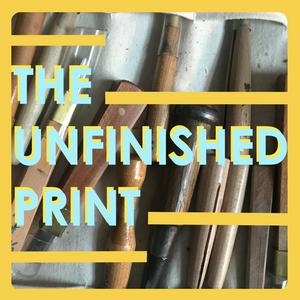
Descarga la app gratuita: radio.net
- Añadir radios y podcasts a favoritos
- Transmisión por Wi-Fi y Bluetooth
- Carplay & Android Auto compatible
- Muchas otras funciones de la app
Descarga la app gratuita: radio.net
- Añadir radios y podcasts a favoritos
- Transmisión por Wi-Fi y Bluetooth
- Carplay & Android Auto compatible
- Muchas otras funciones de la app


The Unfinished Print : A Mokuhanga Podcast
Descarga la app,
Escucha.


